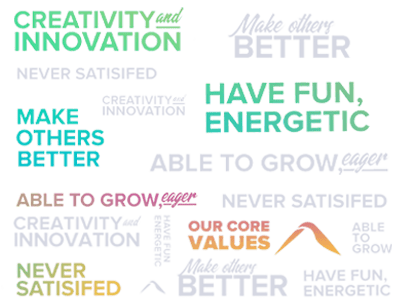Introduction
If businesses are planes and executives pilots, then dashboards are like displays from the cockpit. The pilot must rely on these blinking lights and twitching meters to understand the diverse conditions and make decisions accordingly. The cockpit displays are designed to assist pilots in making better decisions and flying the plane in the right direction.
Just like pilots, business executives can rely on dashboards for harvesting the existing data to make better business decisions. Executive dashboards are a pictorial representation of complex data in an understandable manner. These dashboards represent hits, misses, KPIs and metrics on one page. Designed to assist department heads to gain insight into running processes, and employee performances, these display offers a bird-eye view of real-time data.
Table of Contents
- How does Executive Dashboard Work
- What are some of the Common Benefits of an Executive Dashboard
- Key Ingredients of an Insightful Executive Dashboard
- Input from Multiple Sources
- Conclusion
How does Executive Dashboard Work?
Unlike traditional offices where data is entered manually and then sent for analysis, modern-day dashboards function on Application Programming Interfaces (APIs). These APIs are linked directly to the central data repository. Website Analytics, Customer Relationship Management tools, Accounting Software, and Email databases are some of the common systems that are linked with APIs used to create dashboards.
The dashboard collects data from varied departments and turns them into an exquisite pictorial representation for the ease of executives. Effective implementation of a dashboard can save executives from logging into multiple systems for relevant information. A CEO can rely on these dashboards for accessing information related to “Business Progress”, “HR Activities”, “Website Reach”, “Capital Expenses”.
What are some of the Common Benefits of an Executive Dashboard?
IBM estimates that every day 2.5 quintillion bytes of data are created – so much that 90% of the data in the world today has been created in the last two years. With data being generated at such a rapid pace, enterprises must have a system in place that can harvest data and offer insights.
Reasons why executives from around the world are investing in these dashboards are:
- Saves Time: A dashboard saves executives from logging into multiple systems to acquire requisite information. Executives are important business personnel; hence, every minute they save from these not-so-important tasks can be used for bettering business processes.
- Offers in-depth Analysis: Dashboards not just collect and decorate data; they create graphs, charts, and insights based on the provided data. Such machine-based data analysis renders out the possibility of errors and offers better decision-making opportunities.
- Highlights Growth Opportunities: By analyzing data and converting it into graphs executive dashboards highlight departments that are falling behind.
Key Ingredients of an Insightful Executive Dashboard:
Comparison Analysis:
Well! Comparison is the ultimate way of measuring progress. One can compare reports from the current and previous month to find out the positives or negatives. Dashboards can offer comparison analysis as a key component and make it easier for executives to get a hold of the direction they are heading in.
Input from Multiple Sources:
Most of the existing dashboards acquire data from multiple departments but only a few of them can receive data from cross-platforms and multichannel. In the times, where social media is a dominant channel of sales, traffic, and revenue, it is necessary to have dashboards that can take input from Twitter, Facebook, LinkedIn, and Instagram.
Data Drill Down:
Any dashboard that offers only an exquisite representation of data through graphs and charts but no information once you click on those graphs is bound to fail. Through data drill-down, dashboards can leave a lasting impression. The dashboard that allows executives to click on charts and view detailed information is the need of the hour. Data Drill Down is an indispensable aspect of dashboards because businesses are relying heavily on these pictorial representations for making business decisions.
Data Blending:
The art of collecting data from multiple sources, analyzing them and displaying only the relevant information is referred to as Data Blending. Contemporary Dashboards offer data blending and allow executives like CEOs, CFOs, and CTOs to get updates from their departments instantly.
Sharing Control:
An effective executive dashboard must allow executives to share their screens with users and varied stakeholders. CEOs and CTOs often find themselves in the position where they are required to share dashboards with board members and valued partners. Any dashboard that offers sharing control can aim to capture a huge market share. Also, the real-time sharing and display of real-time data can help businesses make better decisions and get ahead of their competitors.
Cloud-Based:
It makes no sense to have a dashboard or tool that cannot function on the cloud. With people pivoting from offline to online transactions, it becomes indispensable for businesses to rely heavily on online channels for growing their business. Through cloud-based dashboards, executives will be able to handle and view information related to remote sites, which includes warehouses and factories.
Mobile-Friendly:
Businesses are now investing heavily to make their platforms mobile-friendly. With the power shifting from portable computers to mobile devices, any tool that fails to offer mobile optimization will sooner or later go obsolete. Mobile-friendly dashboards will levy incomparable support to the transport, construction, hospitality and manufacturing industries and will usher them into a new era of accountability and efficiency.
Support for Additional Tools:
Since dashboards are not the end of businesses, these pictorial representations must offer support for additional tools. Through support, executives will be able to share data in slides, excel sheets or their websites to highlight the point they want to promote or make.
Conclusion:
In the realm of business intelligence, executive dashboards serve as the compass guiding leaders through the vast sea of data toward strategic decision-making. Through our exploration of the key ingredients of an insightful executive dashboard, it becomes clear that these tools are indispensable assets in the arsenal of modern business leaders.
By offering real-time visibility, actionable insights, and intuitive interfaces, executive dashboards empower leaders to navigate complexities with clarity and confidence. From customizable metrics to interactive visualizations, these dashboards enable executives to identify trends, detect anomalies, and drill down into data with ease, fostering a culture of data-driven decision-making across organizations.
As we peer into the future, the role of executive dashboards will only continue to evolve. With advancements in AI, machine learning, and predictive analytics, tomorrow’s dashboards will offer even deeper insights and predictive capabilities, equipping leaders to anticipate challenges and seize opportunities in real time.




